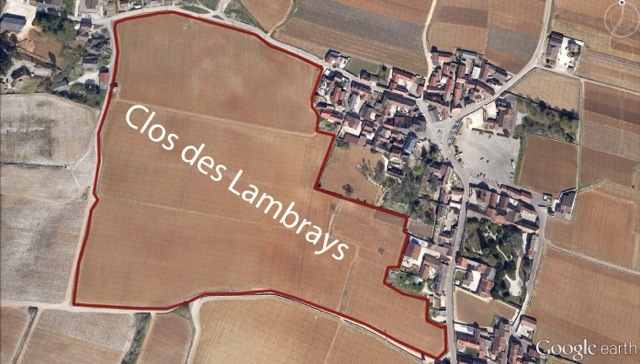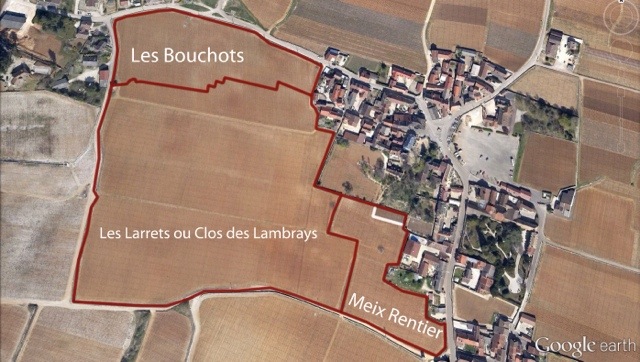The Domaine des Lambrays have recently been sold to LVMH – and the deal included some very fine vineyards – with the jewel in the crown being the 8.84 ha Clos des Lambrays.
This deal is very important for the development in Burgundy as it announces a new big player on the Burgundy scene – LVMH – a company that already owns several prominent estates in Bordeaux and Champagne. It will be interesting to follow the development – as I’m sure we can expect changes and improvements under the new ownership.

Photo: Copyright Winehog.org 2014
I’m therefore planning to make a small series of articles about Domaine des Lambrays – just to explore the vineyards and the history of the Domaine.
The first article is about Clos des Lambrays – where I have made a few maps that illustrates one of the intriguing facts about the LVMH deal – the missing plot of Clos des Lambrays.
Clos des Lambrays – Grand Cru since 1981
Clos des Lambrays is 8.8394 ha and include three sub-climates – from the north we have Les Bouchots (1.9910 ha) – which is located just south of the Ponsot estate. Further south we have the main part called Les Larrets ou Clos des Lambrays (5.7187 ha), and finally in the bottom of the slope towards Clos de Tart we have the smallest part – Meix Rentier (1.1297 ha) – see map below.

Photo: Copyright Winehog.org 2014
The figures above is taken from “Decret du 27 avril 1981 definissant les conditions de production de l’appellation d’origine controlee – Clos des Lambrays”1.
Clos des Lambrays – a monopole – not quite – yet!!
Quite many Burgundy geeks think there is only one owner on Clos des Lambrays – but there are in fact at least two – Domaine Clos des Lambrays and Domaine Taupenot-Merme.
The story is according to Jasper Morris2 that Domaine Taupenot-Merme had a small vegetable garden in the bottom of the climate Meix Rentier, and this plot was replanted with vines in 1974. The plot is 420 square meters and is located just below the garden of the Louis Remy estate – see the map below where the Taupenot-Merme plot is outlined with white.
You need to login to read the rest of this article. If you are not a subscriber, use the subscribe function and sign-up.

 - A true vin d’émotion – a Burgundy of passion
- A true vin d’émotion – a Burgundy of passion - A truly hedonistic wine – lively and enjoyable
- A truly hedonistic wine – lively and enjoyable - A vivacious wine for pure indulgance
- A vivacious wine for pure indulgance - A potential vin d´émotion - frais et léger
- A potential vin d´émotion - frais et léger